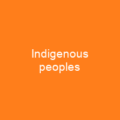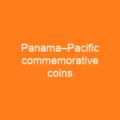Discovering Panama: A Country of Rich History and Diverse Culture
Panama is a country that has seen it all—colonial rule, independence movements, and the construction of one of the world’s most vital waterways. Located in Central America, bordering both the Caribbean Sea and the Pacific Ocean, Panama’s strategic location has made it a crossroads for trade and culture.
Indigenous Roots
Before Spanish colonization, Panama was home to indigenous tribes such as the Chibchan, Chocoan, and Cueva. These groups lived in harmony with nature, but their way of life drastically changed when Europeans arrived. The arrival of Rodrigo de Bastidas and Christopher Columbus in the early 16th century marked the beginning of a new era for Panama.
Spanish Rule and Independence
Under Spanish rule from 1538 to 1821, Panama developed its own unique identity. The Real Audiencia of Panama was established with jurisdiction over Nicaragua to Cape Horn, shaping the country’s autonomy and regional identity. However, it wasn’t until 1903 that Panama gained full independence, thanks to US backing.
Modern Challenges and Triumphs
The early 20th century saw Panama as a key player in global trade, with the construction of the Panama Canal. This monumental project transformed Panama’s economy and solidified its place on the world stage. Yet, it was also during this time that Panama faced significant political turmoil, including military dictatorships and economic struggles.
Recent History
The 1980s and 1990s were marked by political instability, with the US invasion of Panama in 1989 to oust General Manuel Antonio Noriega. This event had a profound impact on Panama’s economy and society, leading to a period of reconstruction and reform.
Economic Growth and Diverse Culture
Today, Panama is known for its high-income economy, with a GDP per capita that ranks 57th in the Human Development Index. The country’s diverse culture reflects its history, blending European, African, and indigenous influences. From traditional clothing to unique festivals like the Christmas parade, Panama’s cultural richness is evident everywhere.
Modern Panamanian Society
Panama’s society is a mix of ethnic groups, with Mestizo, Native American, Black or African descent, and White populations coexisting. Spanish remains the official language, but English is widely spoken in business and tourism sectors. The country’s cuisine, music, and festivals celebrate this diversity.
Conclusion
Panama’s journey from indigenous tribes to a modern nation with a thriving economy and rich culture is nothing short of remarkable. From the strategic importance of the Panama Canal to its vibrant festivals and diverse population, Panama continues to captivate the world with its history and future potential.

You want to know more about Panama?
This page is based on the article Panama published in Wikipedia (retrieved on February 19, 2025) and was automatically summarized using artificial intelligence.






